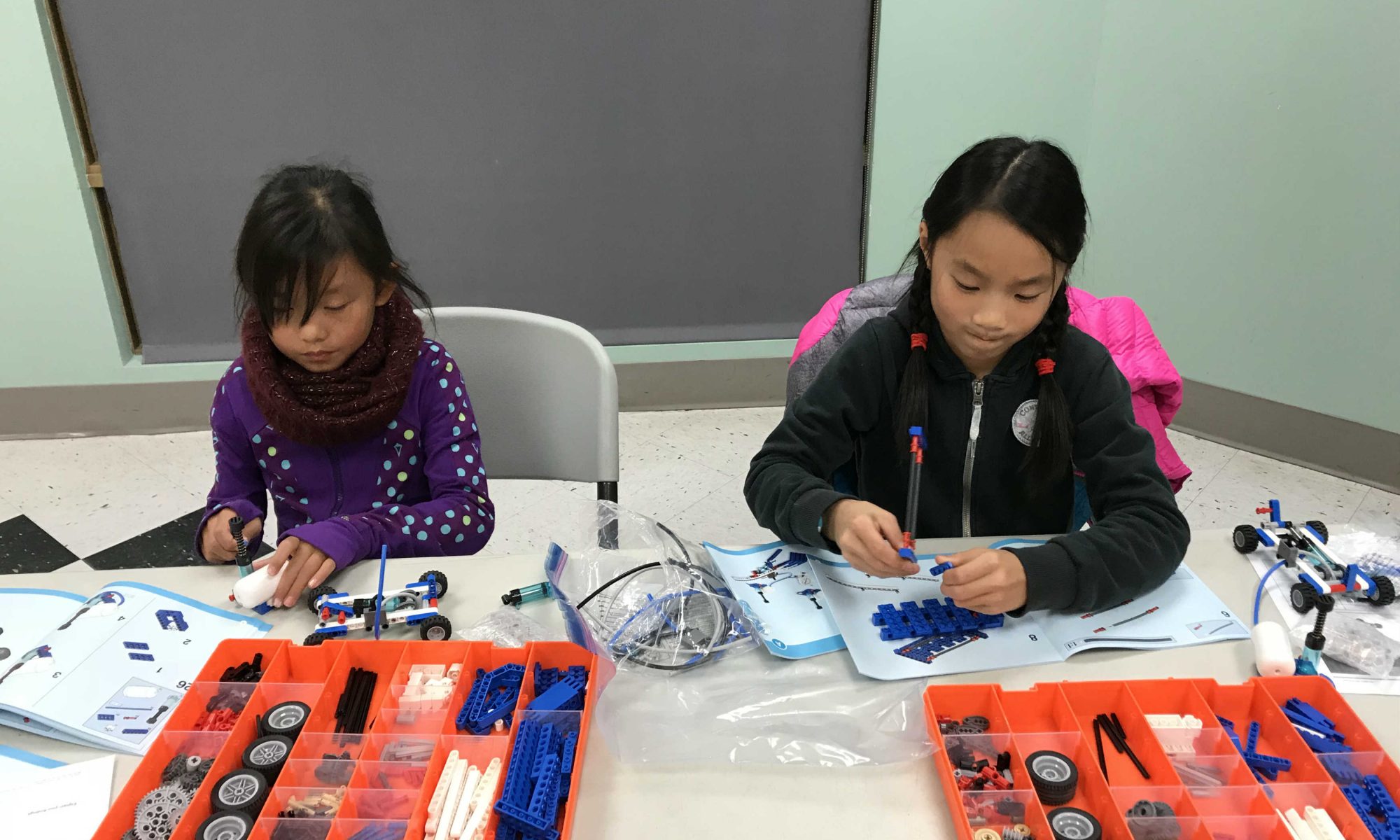The kids worked on the Skywheels, a car that works based on the concept of inertia. After giving the car a little energy, it will carry itself forward depending on its weight. So the kids learned new scientific concepts in class through direct experimentation. After finishing the project, they enjoyed their time playing with the car they made, and trying new things with different lego pieces. In the next class they will work on another interesting project, called the Dragster.
Communication ECA Phase I: The FlyWheeler 20171011
The kids worked on the Skywheels, a car that works based on the concept of inertia. After giving the car a little energy, it will carry itself forward depending on its weight. So the kids learned new scientific concepts in class through direct experimentation. After finishing the project, they enjoyed their time playing with the car they made, and trying new things with different lego pieces. In the next class they will work on another interesting project, called the Dragster.
Communication ECA Phase II Class 2: Principal Models 20171011
The kids continued their work on the principal models from last week. Each of the models in their assignment thought them a new scientific concept which they learned through experimentation. Some of the kids used their creativity and tried new ways to build their projects, which was very fun for them. Next week we will move on to new models, either Power Machine or The Walker, which will be both exciting and educational for them.
Flywheel Car 20171013 PBP Center
Today we built cars powered by flywheels and learned about inertia and the first law of motion; that objects in motion tend to stay in motion and objects that are still tend to stay still. The kids loved being able to see their cars move and overall had fun with them. A few build issues were encountered regarding the gearbox though some of these were due to the fault of the model. During the lecture segment Eva was able to readily point out the relationship between the mass of the flywheel and the amount of energy that it carried and demonstrated good reasoning skills.
I ask that parents get the children the do their homework and to help them clean up a bit less violently.
Communication ECA Phase I Class 5: The SkyWheels 20171011 Amir
All of the kids enjoyed playing with their legos and they all finished their projects in time, which was great. The Skywheels is a car that allows the kids to learn about the concept of inertia. Although the concept was not easy for some of the kids to grasp, they got a thorough introduction to it and some understood it really well. As fun and engaging as the class is, we once again ask the kids to respect the class time and place their pieces back in the box when the class is over. This way we can focus on making the classes more enjoyable and educational for them. Next week we will be working on the Dragster which is another project that focuses on basic physics concepts.
Communication ECA Phase I Class 5: Fly Wheeler 20171011
The students first built a Lego Fly Wheeler, which can be used to get impression of the rotational moment of inertia. They conducted the experiments to observe the travel distances under the different fly wheeler weights. During the experiment, the students need to use the wheeler with different weights, thus the arm energy to get up to the same approximate initial speed are different. Due to the gearbox system connecting with the fly wheeler, the heavier the wheeler is, the more amount of energy is stores to transfer to moving or kinetic energy. The STEM information behind this section is the rotational moment of inertia and the gearbox system. All the students finished the model building part and did the experiment with different level. They enjoyed this section.
Communication ECA Phase III Class 4: Pneumatics: Scissor Lift 20171011
The theme of today is building a scissor lift model, which is the application of the pneumatic system of the last lecture. In this section, the built scissor model consist pneumatic components from cylinders and pumps to the air valve, the air tank, and the manometer. With the built model, the students got a deeper understanding of the design philosophy and working principles of the pneumatic system, which built a solid ground for the next following more advanced pneumatic application models. This section is a good example explaining the air storage system in the pneumatic system.
The STEM information behind this section is the application of pneumatic systems. The cylinder piston rod force output can be calculated by multiplying the air pressure with the piston area. All the students finished the model and the experiments. The application sections interest them more than the principal model introductions.









